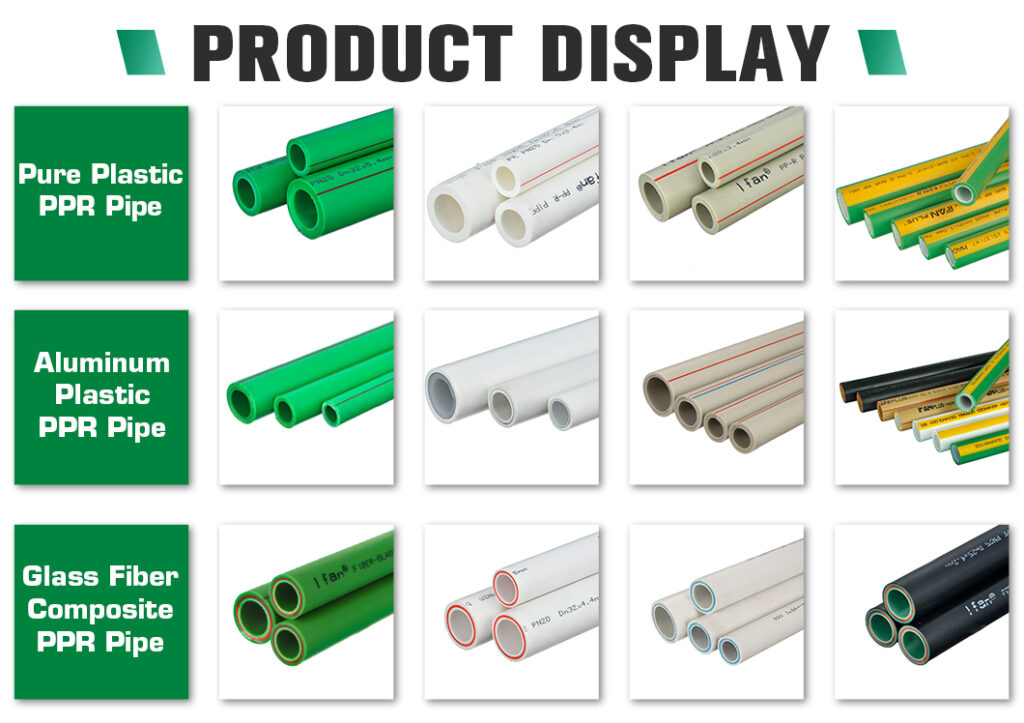The Versatile Role of PPR Piping in Modern Industry
Polypropylene Random Copolymer (PPR) piping has established itself as an indispensable component in a wide range of industries, thanks to its unique attributes and versatility. This comprehensive guide dives into the world of PPR piping, exploring its composition, key features, and multifaceted applications across various sectors.IFAN factory 30+ years manufacture experience support color/size customization support free sample.Welcome to consult for catalog and free samples.This is our FacebookWebsite: www.facebook.com.
Introduction to PPR Piping
Pntek PPR, or Polypropylene Random Copolymer, is a thermoplastic material known for its remarkable properties. Comprising a copolymer of propylene and ethylene, PPR pipes have gained immense popularity for their application in industries such as construction, manufacturing, and agriculture. Their versatility in transporting different fluids, both hot and cold, makes them an attractive choice.
Key Characteristics of PPR Piping
The distinct features of Pntek PPR piping are pivotal in driving its use across industries:
1. Exceptional Corrosion Resistance
PPR’s primary strength lies in its resistance to corrosion. This quality makes it ideal for transporting various fluids, including aggressive chemicals, potable water, and industrial waste, thereby maintaining the integrity of the transported substances.
2. High Thermal Stability
Pntek PPR pipes boast remarkable thermal stability, which enables them to effectively manage hot and cold water systems. With a capacity to withstand temperatures of up to 90°C (194°F), they find extensive use in plumbing and heating applications.
3. Durability
The durability of PPR pipes is a standout feature. They can endure high pressure and are resistant to impacts, ensuring a long lifespan and minimal maintenance requirements.
4. Low Thermal Conductivity
With low thermal conductivity, PPR pipes help minimize heat loss, contributing to energy efficiency in heating systems.
5. Hygienic Properties
The non-toxic, lead-free, and corrosion-resistant nature of PPR pipes makes them safe for transporting potable water, a crucial factor for their application in the water supply industry.

Applications Across Industries
PPR piping plays a vital role in a multitude of industry sectors:
1. Construction and Plumbing
In the construction industry, PPR pipes are widely used for water supply, heating, and sanitation systems. Their durability and hygienic properties make them an ideal choice for plumbing applications in residential and commercial structures.
2. Industrial Sector
Pntek PPR piping proves its mettle in the industry, facilitating the transfer of chemicals, industrial fluids, and wastewater, owing to its corrosion resistance and high-temperature stability.
3. Agriculture and Greenhouses
The agricultural and greenhouse sectors rely on efficient irrigation systems. PPR pipes are durable and resistant to chemical fertilizers and pesticides, making them suitable for agricultural water supply.
4. Swimming Pools and Spa Facilities
PPR piping is an essential component in swimming pools and spa facilities, ensuring the continuous and hygienic circulation of water.
5. Gas Transportation
In regions where safety regulations and material standards permit, PPR pipes are used for the distribution of gases.
6. Infrastructure and Municipal Projects
PPR piping finds extensive application in municipal projects, including the construction of water treatment plants and sewerage systems.
7. Geothermal Applications
PPR pipes are favored for geothermal heating and cooling systems due to their ability to withstand high-temperature variations.
8. Food and Beverage Industry
The food and beverage industry relies on PPR piping for fluid transportation due to its non-toxic, non-corrosive, and hygienic properties.
Maintenance and Care
To ensure the longevity and efficiency of PPR piping, regular maintenance is crucial. This includes periodic inspections for leaks, ensuring proper joint integrity, and addressing any signs of wear or damage.
Conclusion
Pntek PPR piping is a versatile, durable, and efficient solution that serves diverse purposes across different industries. Its unique properties, including corrosion resistance, high thermal stability, and non-toxic nature, make it an attractive choice for various applications. Understanding the advantages and applications of PPR piping is key to maximizing its potential in diverse sectors. Whether in construction, industry, agriculture, or municipal projects, PPR piping continues to provide reliable and sustainable solutions for fluid transport.

